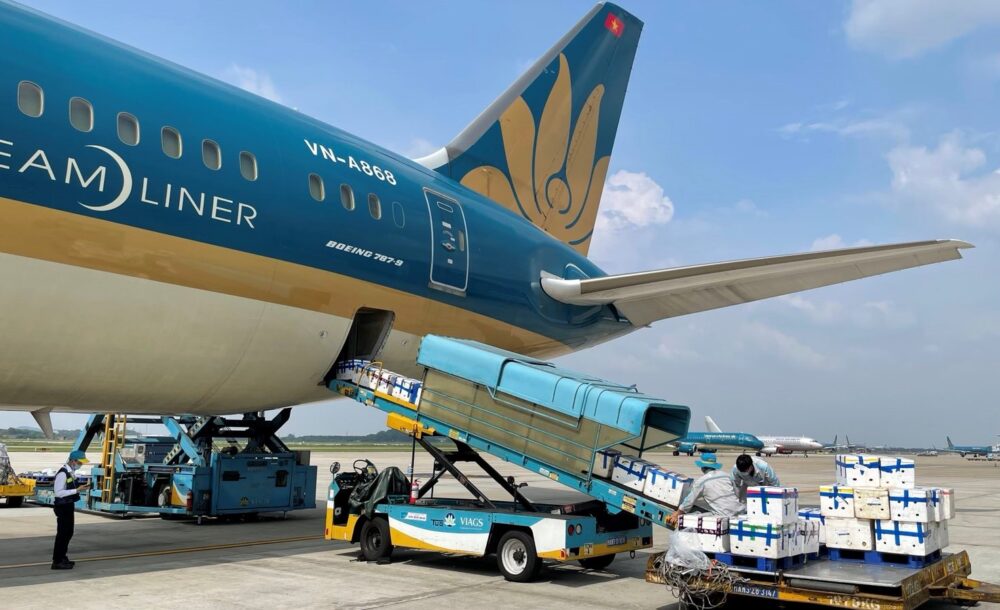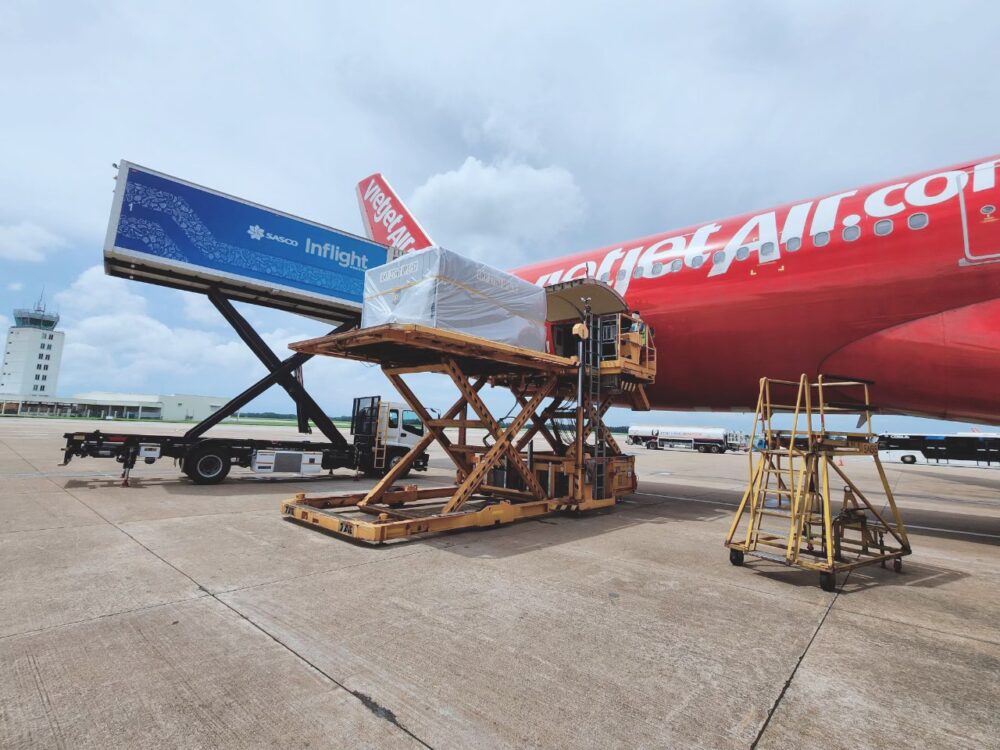The air freight industry in Vietnam plays a pivotal role in the nation’s economic landscape, serving as a vital lifeline for international trade and commerce. Its importance has become even more pronounced in the wake of the COVID-19 pandemic, where adaptability and resilience have been put to the test. In this article, we delve into the current trends, potential, and challenges of Vietnam’s air freight sector, offering insights for those interested in investing in Vietnam. From post-pandemic recovery to the booming e-commerce market, we’ll unravel the opportunities that await in this dynamic industry. Join us as we navigate the skies of the Vietnamese air freight landscape and discover the keys to successful investment in this critical sector.
Current Trends in the Vietnamese Air Freight Industry
The Vietnamese air freight industry bore the brunt of the COVID-19 pandemic, facing significant disruptions within the global logistics and air cargo domains. As international travel restrictions and lockdowns threw supply chains into disarray, the sector grappled with a substantial drop in air cargo demand. However, as the world initiates its journey towards recovery, Vietnam’s air freight landscape has emerged as a beacon of adaptability and resilience.
At the pandemic’s zenith, the industry grappled with a drastic reduction in passenger flights, traditionally pivotal for transporting a significant share of air cargo in their hold. This capacity scarcity translated into elevated air freight rates and supply chain bottlenecks, reverberating across global businesses.
While the pandemic wrought havoc on global air passenger travel, Vietnam’s international air freight sector defied the odds, experiencing a remarkable surge of over 21.3 percent in 2021 compared to the preceding year. This surge underscores the industry’s remarkable fortitude and capacity to pivot during turbulent times.
Vietnam’s air freight sector demonstrated tenacity and adaptability, with air cargo volumes, both domestically and internationally, staging a steady recovery in tandem with the global economic resurgence. Moreover, situated strategically in Southeast Asia, Vietnam’s geographical location has cemented its role as a pivotal logistics hub.
Furthermore, the industry’s embrace of technological advancements has bolstered efficiency significantly. Innovations in cargo tracking, automation, and digitalization have paved the way for smoother operations and heightened supply chain visibility.
In the initial quarter of 2022, Vietnam’s air freight industry sustained its upward trajectory. Domestic cargo volume hovered around 98,000 tons, while international cargo volume surged to approximately 292,000 tons, reflecting an impressive 21.1 percent uptick compared to the corresponding period in 2021.
Nevertheless, it’s crucial to underscore that Vietnam has yet to establish a dedicated airline exclusively for cargo transport. Amid the pandemic’s turbulence, Vietnam Airlines, the national carrier, demonstrated ingenuity by repurposing a dozen wide-body aircraft, accommodating cargo in passenger and belly compartments. This innovative approach even extended to removing seats from narrow-body aircraft to facilitate goods transportation, further highlighting the sector’s resolute spirit and adaptability.

Development Potential and Opportunities
The Vietnamese air freight industry is poised for substantial growth and presents lucrative opportunities for investors. As the world transitions to a post-pandemic reality, this sector is undergoing transformative changes.
Growth in Airport Capacity
Vietnam’s ambitions for the Air Freight industry are underpinned by substantial investment in airport infrastructure. By 2025, airports managed by the Airports Corporation of Vietnam (ACV) are projected to have a total designed capacity of 2.5 million tons of cargo annually. By 2030, these figures are expected to increase to 3.5 million tons of cargo yearly. The plan also encompasses 14 international airports and 17 domestic airports. Such extensive infrastructure development is vital for accommodating the rising demand for air cargo services. It’s worth noting that substantial investment is required, estimated at $17.5 billion for airport infrastructure between 2021 and 2030.
Foreign Investment Opportunities and Incentives
Vietnam’s commitment to fostering a conducive investment climate is evident in recent legislative changes. New investment laws and guiding decrees have been enacted to create a more favorable environment for foreign investors. This extends to the aviation sector, reducing barriers and enhancing opportunities for investors to participate in various aviation businesses. Several financial backers have already expressed interest in investing in Vietnamese airlines, including the national carriers.
Vietnam’s participation in the ‘ASEAN Open Skies’ agreement, effective since 2015, has created a favorable environment for the growth of the air freight industry. This regional initiative eliminates fare control, capacity restrictions, and frequency limitations on flights within the ASEAN region. It positions Vietnam as a strategic player in regional air cargo operations.
In the current socio-economic recovery and development program, aviation enterprises in Vietnam can benefit from a 2 percent interest rate on loans from commercial banks and a 50 percent reduction in environmental protection tax for the 2022-2023 period. These incentives further enhance the business environment for the air freight sector.

Key Role in Export
Vietnam’s burgeoning reputation as a ‘China plus one’ destination for manufacturing and exports has drawn substantial investments from global giants like Samsung, Nike, and Foxconn. The country’s exports encompass a wide spectrum, including electronics, textiles, garments, and agricultural products. This emphasizes the pivotal role of air transport in Vietnam’s exports.
ONE Record Initiative
The adoption of the ONE Record Initiative by the Cargo Services Conference signifies a significant step toward modernizing the air cargo industry. This initiative aims to replace various data standards used for transport documents with a single record for every shipment. This move toward standardization is expected to enhance transparency and efficiency within the industry, further positioning Vietnam’s Air Freight sector for growth.
Challenges and Considerations for Investors
Investing in Vietnam’s Air Freight industry holds tremendous promise, but it’s vital for prospective investors to be aware of the challenges and considerations that accompany this opportunity.
Infrastructure Constraints
One of the foremost hurdles faced by the air freight sector in Vietnam pertains to infrastructure limitations. The existing infrastructure and logistics services have struggled to meet the surging demand, leading to elevated logistic costs. This deficiency becomes evident in the underinvestment in modern equipment and infrastructure, particularly outside of major international airports like Tan Son Nhat and Noi Bai. These airports boast high-capacity international warehouses and standardized equipment. In contrast, most other airports lack the automation and synchronization of warehouse infrastructure and transportation, which can hinder operational efficiency. Moreover, the underdeveloped road network disrupts the connection between localities and regional airports, extending transport times and impacting cargo quality. Despite these challenges, there are concerted efforts, such as those led by Airports Corporation Vietnam (ACV), to enhance infrastructure at airports like Cam Ranh, Da Nang, and Can Tho to meet the growing demand for goods transportation.

Human Resources Shortage
Another significant impediment is the shortage of well-trained human resources in the air freight industry. Currently, there is a deficit of approximately 2 million employees in the logistics sector, which includes air freight. Furthermore, there’s a dearth of skilled labor, with 80.26 percent of the workforce receiving on-the-job training, while only 23.6 percent participate in formal training courses. This scarcity of qualified personnel can pose challenges in maintaining high operational standards and efficiency.
Regulatory and Investment Barriers
The aviation sector in Vietnam is subject to stringent regulations and faces significant business risks. These factors can deter both domestic and foreign private investments in the sector. One notable regulation pertains to the capital contribution rate for foreign investors in air transport enterprises, currently capped at 34 percent. This restriction can limit foreign investors’ ability to realize long-term business goals. In comparison, neighboring countries like Thailand, Indonesia, Cambodia, and the Philippines permit higher foreign capital contribution rates, offering more attractive investment conditions.
Final Thoughts
The Vietnamese air freight industry stands as a beacon of opportunity in a post-pandemic world. With robust growth potential, strategic geographical advantages, and a burgeoning e-commerce sector, it offers investors a chance to be part of an industry poised for expansion. However, navigating this dynamic landscape requires strategic planning and due diligence. To unlock the full potential of this sector, we invite you to access the full version of Viettonkin’s latest whitepaper “Unleashing Vietnam’s Potential: Accelerating Growth in the Aviation Industry through Digital Transformation” – a collaborative endeavor with IBS Software – a leading SaaS solutions provider to the travel industry globally.
Contact us today to explore the exciting prospects that await in Vietnam’s air freight industry and embark on a journey of strategic investment and growth.


